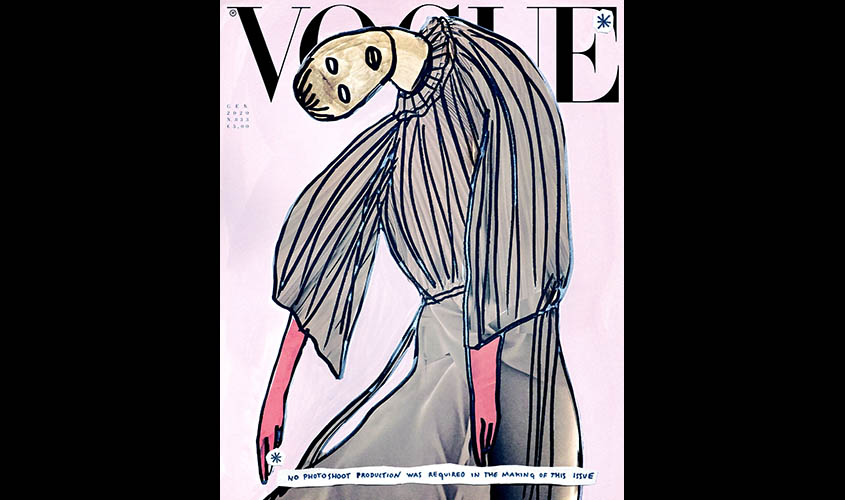What is a fashion magazine without photo shoots? Without those glossy
It’s a more environmentally friendly magazine, for one. Or so says Italian Vogue, which aims to make a statement about sustainability this month by omitting photo shoots.
In his January 2020 note to readers, Emanuele Farneti, the editor-in-chief, described what it takes to fill one issue of his magazine (in this example, the traditionally thick September issue) with original photographs:
“One hundred and fifty people involved. About twenty flights and a dozen or so train journeys. Forty cars on standby. Sixty international deliveries. Lights switched on for at least ten hours nonstop, partly powered by gasoline-fuelled generators. Food waste from the catering services. Plastic to wrap the garments. Electricity to recharge phones, cameras …”
Owning up to this pollution was important to Farneti, particularly after he and the 25 other international Vogue editors made a pledge in December to help “preserve our planet for future generations” and show respect “for our natural environment.”
These are not unusual declarations, given the fashion industry’s obsession with projecting sustainability. But “declarations are not enough,” Farneti said in an interview.
“It’s very important that you actually act,” he said.
His act: replacing photos with illustrations, hiring artists to “show clothes without photographing them,” as he described in his editor’s note.
The issue, on newsstands Jan. 7, comes packaged in eight different covers. Each depicts a model wearing Gucci, though the covers vary in style from collage painting to Japanese fantasy-meets-Italian renaissance. All feature a single phrase: “No photo shoot production was required in the making of this issue.”
For her cover, Italian multimedia artist Vanessa Beecroft presented a figure hunched over, as if trying to contort her body to fit the confines of the magazine cover. Beecroft, a frequent Kanye West collaborator of late, said the cover is her first illustrated fashion project.
Cassi Namoda, a Mozambique-American painter, offered a depiction of model Ambar Cristal Zarzuela crying while sitting on the edge of a red chair. Near her head is a mosquito dripping blood, said by the magazine to represent global warming.
The erotic comic artist Milo Manara’s lingerie-clad model, Olivia Vinten, wears red latex gloves and wields a black leather whip, posing in front of dreamy pastel clouds. Farneti said there was some debate whether it was fitting “to bring back eroticism on the cover of a women’s magazine” in this era of women’s empowerment.
“But at the end, we decided that the girl is so in control,” he said, describing the image as inspired by Michelangelo’s “David.”
Italian Vogue has long used social issues as fashion fodder. In 2008, Franca Sozzani, the magazine’s former editor, famously published an issue featuring only black models, and she courted controversy throughout her reign with editorials themed around domestic violence, the BP oil spill and the war on terror.
Since taking over the magazine after Sozzani’s death in 2016, Farneti has continued the tradition. In 2017, he made headlines for putting a same-sex kiss on the cover, then dedicated an issue to women over 60. (He’s drawn criticism, too; in 2018, for example, the magazine was accused of putting cover model Gigi Hadid in blackface.)
January’s illustrated issue is “probably the boldest” of Farneti’s stunts thus far, he said. Still, it is ultimately a gesture—not the kind of long-term change that could actually reduce the carbon footprint of magazine-making. Farneti knows this.
“I think that the most honest way to face a problem is starting by admitting it,” he said, referring back to the environmental expenses he listed in his editor’s letter. “That was our way to say that we know we are part of a business that is far from being sustainable.”
As one step forward, Farneti said that in 2020, Italian Vogue will be among the first of Condé Nast’s international publications to use 100% compostable plastic wrapping.
More locally, the money saved from skipping photo shoots—forgoing all those travel, production and talent costs—will be donated to Fondazione Querini Stampalia, a cultural center and library in Venice that was damaged in November by the city’s high-tide floods.
The magazine would not disclose the amount of the donation.

